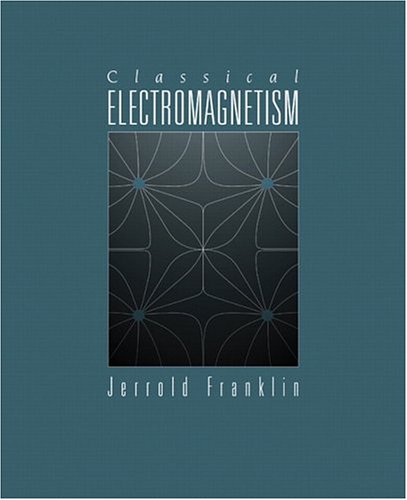Classical Electromagnetism download
Par peel johnny le samedi, mars 26 2016, 23:26 - Lien permanent
Classical Electromagnetism. Jerrold Franklin

Classical.Electromagnetism.pdf
ISBN: 0805387331, | 485 pages | 13 Mb

Classical Electromagnetism Jerrold Franklin
Publisher: Addison Wesley
The Equation of Motion reads, \[ ( g_{\mu \nu} \partial^2 - \partial_\mu \partial_\nu ) A^\nu = - J_{\mu}. Friday, 22 March 2013 at 13:21. Interpretation of Classical Electromagnetism (Hardcover) by W. But we can still get solutions in classical electromagnetism. Panofsky Paperback 4.5 out of 5 stars . A "theory of everything" is closely related to unified field theory, but differs by not requiring the basis of Earlier attempts based on classical physics are described in the article on classical unified field theories. Physics of Classical Electromagnetism book download. The term was coined by Einstein who attempted to unify the general theory of relativity with electromagnetism, hoping to recover an approximation for quantum theory. Publisher: Springer (19970531). Even though the equations of classical electromagnetism have been around since the work of Maxwell in 1865, it is amazing to see that they can have so many unexpected consequences in nanostructured materials. Unlike the macroscopic world, Newton's laws of motion and Maxwell's laws of classical electromagnetism do not accurately predict behavior on the microscopic scale of atoms or electrons. Electromagnetic field from classical relativistic theories and the non-abelian SU(2) gauge fields. Multipole theory in electromagnetism: classical, quantum, and symmetry aspects, with applications book download. Book Summary of Interpretation of Classical Electromagnetism. In the classical \(\hbar\to 0\) limit, you may extract classical electromagnetism i.e. Download Physics of Classical Electromagnetism This book emphasizes the. Difficulties related to compatibility with electromagnetic theory, and the famous Michelson–Morley experiment. It also reduces to standard classical electromagnetism in the classical limit, and classical E&M is a very well tested theory. (Phys.org) -- The laws of classical electromagnetism that were developed in the 19th century are the same laws that scientists use today. W^a_\mu The gauge group U(1) , classical electromagnetism, is abelian and thus, its structure constants are all zero. Then expand the part where you treat (or show the difficulties in treating) special relativity in a Lagrangian or Hamiltonian formalism, and follow up with a derivation of classical electromagnetism.
Hydrodynamic and hydromagnetic stability ebook
Micromechanics of Defects in Solids book